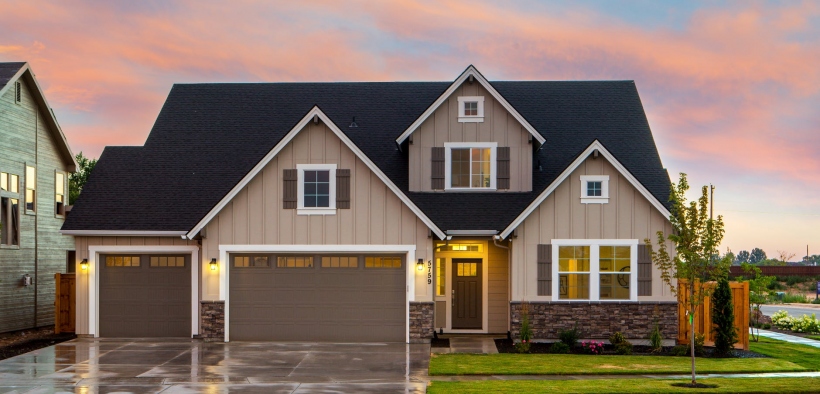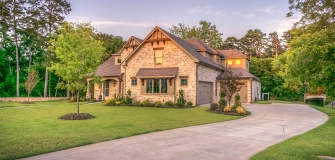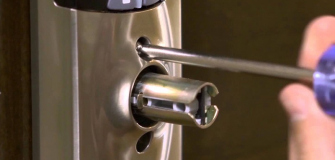5 Types of Roofing Materials And Their Benefits
Share

Whether you are building a new home or have an existing home that needs a new roof, a quick search reveals that you now have many different types of roofing materials from which to choose. Depending on your needs, how much you want to spend, the look you want for your home, and various other factors, you’ll have plenty of decisions to make along the way. To help you with this, here are five different types of roofing materials and their various benefits.
Asphalt
If you are on a tight budget, asphalt shingles offer you a very affordable price, numerous colors from which to choose, and very good durability. When properly maintained, an asphalt shingle roof can easily last 30 years.
Pros of Asphalt Roofing
One of the biggest benefits of asphalt roofing is that it’s incredibly affordable. It’s also very durable and can last up to 25 years with proper maintenance. It’s also easy to install and repair if needed, making it a great option for those who want a quick and easy installation process. Additionally, asphalt roofs are fire-resistant and they don’t require much maintenance in order to keep them looking like new.
Cons of Asphalt Roofing
On the other hand, there are some drawbacks to using asphalt roofing as well. For one thing, it doesn’t offer as much protection against UV rays as other materials do. Also, since asphalt shingles are made from petroleum-based products they can be vulnerable to extreme temperatures and may not hold up in areas that experience high winds or hail storms. In addition, asphalt shingles tend to fade over time due to sun exposure which can diminish their aesthetic appeal over time if left unchecked.
Asphalt roofing is one of the most popular types of roof material today because it offers an attractive price point without sacrificing performance or durability. However, like any material type there are pros and cons associated with using it for your home’s roofing needs; understanding these pros and cons will help you make an informed decision about whether or not this is the right choice for you and your home’s particular needs. With proper maintenance, any type of material can have a long lifespan so be sure to consider all factors before making your final decision!
Metal
Growing more and more in popularity, metal roofing is generally more expensive than asphalt shingles, but can last at least 50 years once installed. Also available in many styles and colors, metal roofing is easy to install and maintain and offers excellent protection against fire and extreme weather.
Pros of Metal Roofing
One of the biggest advantages that metal roofing has over other types of roofs is its durability. Metal roofs typically last anywhere from 40-70 years, depending on the type of metal used. This makes them one of the longest-lasting roofing materials available. Another advantage is that metal roofs are relatively lightweight, making them easier to install than heavier materials like tile or slate. They also require very little maintenance, so once they are installed, homeowners don’t have to worry about them for many years. Finally, metal roofs are also highly fire resistant and can actually help protect your home in case of a wildfire or other disaster.
Cons of Metal Roofing
The biggest downside to installing a metal roof is cost—metal roofs can be significantly more expensive than traditional asphalt shingles or wood shakes. Additionally, while metal roofs are highly durable they can still become damaged by hail or falling debris from neighboring trees, which could lead to costly repairs down the road. Finally, metal roofs can be noisy during heavy rainstorms—a problem that’s amplified if there is an attic space directly underneath them—so this should be factored into any decision-making process as well.
Metal roofing has some clear advantages over other types of roofs when it comes to durability and fire resistance (not to mention looks). However, it’s important to consider all factors before deciding if it’s right for your home—including cost, maintenance requirements, and potential noise issues. By taking all these things into consideration you can make an informed decision that best suits your needs and budget.
Tile Roofing
If you are looking for a roofing material that is very environmentally friendly, durable, and will be very efficient at helping to keep your home insulated, you can’t go wrong with tile roofing. Usually made of either clay or concrete, a tile roof can easily last 100 years or more, meaning you’ll likely never need to replace your home’s roof ever again once it’s installed. Also fire and weather-resistant, a tile roof can come in various styles and colors.
Pros of Tile Roofing
One of the main advantages of using tile roofing is its durability. Tile roofs are incredibly long-lasting and can last up to 100 years with proper maintenance. This makes them a great investment for homeowners who want a reliable, low-maintenance option. In addition to its durability, tile roofing is also fire-resistant, weatherproof, and energy efficient. This means that it can help keep your home cool in the summer months while still providing protection against the elements.
Another advantage of tile roofing is its aesthetic appeal. Tile roofs come in a variety of colors, shapes, and sizes so you can find one that fits your particular style. They also provide extra insulation which helps reduce noise from outside sources like rain and hail.
Cons of Tile Roofing
The main disadvantage of tile roofing is its cost. Because tiles are heavier than other materials like asphalt shingle or metal, they require more support underneath in order to be properly installed—which means additional labor costs for installation. Additionally, tiles can be expensive to replace if they become damaged or broken due to harsh weather conditions or wear and tear over time.
Tile roofs also require regular maintenance in order to keep them looking their best and functioning properly. This involves cleaning off debris or leaves that have accumulated on top as well as checking the sealant around the edges periodically to make sure it hasn’t degraded over time due to exposure to moisture or extreme temperatures. Additionally, tiles can crack if they’re exposed to too much weight so special care should be taken when walking on them during maintenance checks or repairs.
Tile roofs offer many benefits for homeowners looking for an aesthetically pleasing yet durable option for their homes’ roofs—but there are also some drawbacks that should be considered before making your final decision about what material you want to use for your roof replacement project or new construction project. Weigh all the pros and cons carefully before making your choice; this will help ensure your satisfaction with your ultimate decision!
Slate
Often considered to be the absolute best type of roofing material, slate can last as long as 200 years once installed on a home. Considered to be a look that never goes out of style, a slate roof is made of natural rock, meaning your roof will have a look that is completely unique to any other home. Able to resist fires and strong winds, slate is a roofing material you should seriously consider for your home.
Pros of Slate Roofing
Slate roofs have been around for centuries and are known for their longevity. They can last anywhere from 75-200 years, depending on the quality of the material used and how well they are maintained. Slate roofs also require very little maintenance, which means that once it’s installed, you won’t have to worry about it too much or spend extra money on upkeep. Additionally, they provide excellent insulation against cold and hot temperatures, so you will save money on energy costs as well.
Cons of Slate Roofing
Although slate roofs have many benefits, there are some drawbacks to consider as well. One downside is that slate roofs can be quite expensive due to their high initial cost and installation requirements. Also, if not properly maintained over time, a slate roof can start to show signs of wear and tear more quickly than other types of roofing materials such as asphalt shingle or metal roofing systems. Finally, although they do provide great insulation against temperature extremes, they can also be prone to cracking in extreme temperatures if not properly cared for over time.
In conclusion, slate roofs offer many advantages but there are some drawbacks as well that you should consider before making this investment in your home. If you decide that a slate roof is right for you and your budget allows it then go ahead and enjoy the many benefits that this type of roof provides! With good care and maintenance practices in place, your slate roof should provide years of protection and beauty for your home while keeping energy costs down in the process!
Wood
Though less popular than in years past, wood is still a popular roofing material if you want your home to have a rustic look and feel. If you have an older home with a historical look you wish to preserve, wood is a great choice of roofing material.
Pros of Wood Roofing
Wood roofing has been around for centuries because it offers a wealth of benefits. One of the major advantages of wood is its natural beauty. With wood, you can create a truly unique look for your home that will stand out from others in the neighborhood. Additionally, wood is highly durable and can last up to 50 years with proper maintenance, making it an excellent long-term investment. Finally, wood is an environmentally friendly option since it’s made from renewable resources like cedar or redwood trees.
Cons of Wood Roofing
Despite its many benefits, there are some downsides to using wood as your roof material. For one thing, installing a wooden roof requires more time and labor than other types of roofs such as shingle or metal roofs. Additionally, while wooden roofs are naturally beautiful, they require regular maintenance in order to keep them looking their best—so be prepared to spend extra money on upkeep over the years. Finally, because wooden roofs are more expensive than other materials upfront (and also require more money for maintenance), they may not be the most cost-effective choice for budget-conscious homeowners.
Ultimately, whether or not wood roofing is right for you depends on your particular needs and budget constraints. If you’re looking for a beautiful and long-lasting option that’s also environmentally friendly, then wood may be a great choice for you—just be sure to factor in the extra costs associated with installation and maintenance before making your decision! By understanding the pros and cons associated with each type of roof material available today, you’ll be able to make an educated decision that will serve your home well into the future!
Since all of these roofing materials offer various types of benefits, take your time when making your decision. Whether you select metal, asphalt shingles, or another type of material, your roof will look great and last for many decades and maybe beyond.









